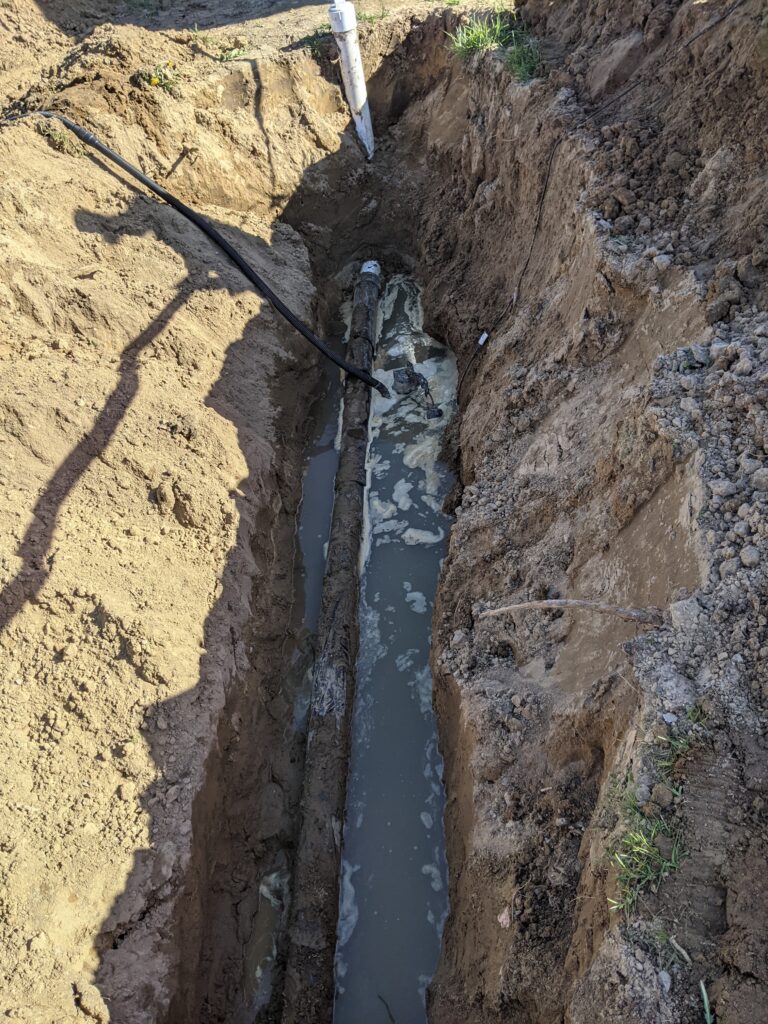
I have previously described Orangeburg pipe as Al Qaeda’s revenge. The most important thing to know about Orangeburg sewer pipe is that it collapses. When it does that, you have a bunch of tenants with clogged sewers, a DIY leach field, and the state health department up your bung-hole. If you buy a park with Orangeburg sewer lines, you need to replace them.
Orangeburg is usually described as ‘cardboard’, but that is not quite right. It is made of compressed wood fibers that are impregnated with tar. It was first manufactured in the late nineteenth century. Before the second world war, it was used as electrical conduit (it was used, inter alia, to hold the electrical wires in the Empire State Building), and for waste water produced by the oil industry. Efforts to use it for drinking water were a bust, because it cannot withstand interior pressure. Because of the shortage of materials that resulted from the postwar building spree, it was used as sewer lines in most of the housing that was built during the 40s, 50s and 60s. The largest manufacturer of it was the Fibre Conduit Company, subsequently named the Orangeburg Manufacturing, based in Orangeburg, NY. Orangeburg pipe began to go out of style in the early 70s, due to competition from PVC and ABS pipe. In 1974, the Orangeburg Manufacturing company went out of business. When that happened, bituminous wood fiber sewer pipe was relegated to the dung-heap of history.
Orangeburg pipe has, at best, a thirty-year economic life. It does not withstand pressure from above. Since joints between the pipe segments are not glued, they are vulnerable to root intrusion. Roots have been known to wrap themselves along pipes, seeking water, crushing the pipe like a python crushes a pig. The interior of the pipes can blister. These blisters can be large, creating significant obstructions. If the soil above a pipe contains a rock, the top of the pipe can collapse, causing the cross-section to look like a capital “B” lying on its side. If a user dumps baby wipes, paper towels, tampons or turkey grease down the toilet or the drain, the two side channels that make the rounded members of the “B” can clog up. Sometimes these can be jetted or snaked, but it is only a matter of time before they close completely.
In a perfect mobile home park world, sewer mains run alongside and parallel to the pads. Each home feeds the main through a lateral pipe (and in a perfect world, these pipes are all gravity-fed, obviating the need for a pump – but that’s a different issue). In this ideal configuration, sewer mains are underground, but the earth on top of them is unobstructed, making it easy to excavate if repairs are needed. However, in many mobile home parks developed prior to the 90s, the utility mains run directly beneath the homes. This makes it easier to configure the septic lines on Day 1 – you just tap directly into the main from each home, rather than building and setting a lateral from each home to the main – but if the lines need attention, you need either to excavate under the homes, or to move the homes while you are working. Neither is a pleasant prospect.
As I have written previously, the sewer main under Eli, the tin-hat man’s, home in my park in northern New York is Orangeburg, and it has collapsed. We have been able to put a ban-aid on the problem by jetting it, but the pipe is on its last legs. A sixty-foot run needs to be replaced. About forty of those feet run under the tin-hat man’s home and the home of the lady in the Witness Protection Program. The manager of that park, Mike, replaced the unobstructed section of the run this week, but he is not happy about the prospect of digging under those two homes with a coffee can while swimming in shit. I have bought him a protective suit, and have told him what I can, i.e. (i) problems don’t solve themselves, (ii) it is better to take care of this when it is not an emergency (imagine what it would be like doing this when it was 20 below outside), and (iii) he is a better man than me. He understands all that, and he has agreed to do the job, but he is not looking forward to it.